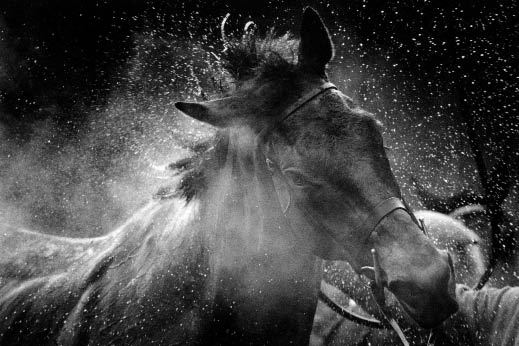Barry Hills has never been an easy man to love but I don’t suppose he would have it any other way.
Barry Hills has never been an easy man to love but I don’t suppose he would have it any other way. There are certain trainers who capture the public imagination and affection, but the same crowds who regularly dissolve into tears at the sight of a Henry Cecil winner would no more dream of intruding on Barry Hills than would a punter dare ignore a horse of his at the Chester May meeting.
Respect, admiration, a certain wary apprehension, these are what ‘Mr Grumpy’ has always demanded of the world, and ‘hard’, ‘brave’, ‘professional’, ‘exacting’ and ‘combustible’ the terms in which he is most often described. Those who know him best speak fondly of a mellow and even sentimental side, but if one wanted to picture a man who embodied a pre-Diana world of emotional privacy and ‘old-school values’ then one could do a lot worse than the trim, impeccably turned-out Barrington Hills.
It is odd in a way that he has never earned the punter’s love, because the foundation of his whole training career was a clinically executed betting coup that has become part of racing lore. The son of a travelling head lad, Hills was following in his father’s footsteps when a horse called Frankincense came into the yard, and over the winter and early spring of 1968 he and his fellow conspirators went to work, placing small amounts here and there across the country at every price from 66/1 downwards on the four-year-old — an absolute certainty, Hills reckoned — to win the first major handicap of the coming flat season, the Lincoln.
When on 27 March Frankincense duly obliged by half a length, Hill’s share of the winnings was, in modern terms, £1,520,000, and with it he bought his first racing stable. Within three years it was clear that a trainer of exceptional ability had arrived, and 40 years, more than 3,000 winners and any number of successful betting coups later, the same mix of instinctive judgment, meticulous planning, self-reliance, boldness and hard work still keeps him at the head of his profession.
The story of such a career can easily descend into a list of horses, owners and trainers, but for the racing fan a biography of this kind is as much an aide memoire as anything else. The account of Hawaiian Sound’s defeat in the 1978 Derby might not seem much on the page, for instance, but for anyone who lost their money on ‘the Shoe’ that day or, better still, was ‘box-walking’ a Benghazi flat, surrounded by a ring of five crackling radios, desperately trying to hear Peter Bromley on the World Service call home Greville Starkey and Shirley Heights at 10/1, the mere names are enough to bring it all back.
And there are names aplenty. Gordon Richards was still in the saddle when Hills began his career and anyone interested in racing will find some horse or race here to jog the memory. From Frankincense, the foundation of the family fortunes, to Rheingold, Arc winner and only narrowly beaten by Roberto and a demonic Lester Piggott in the 1973 Derby; from that wonderful staying grey, Further Flight, to the brilliant 1000 Guineas and Coronation Stakes winner Ghanaati — trained by an ailing Barry, prepared for Ascot by son Charlie, and ridden by another son Richard — Hills horses and the Hills dynasty have been an integral part of British racing for as long as most of us have been following the sport, and Robin Oakley does them all proud.
With Christmas coming, The Art of the Race will also undoubtedly find its captive market (available at www.amandalockhart.com). There is an engagingly bizarre Preface by Sir Mark Prescott that has more to do with his passion for bull-fighting than the actual book in hand, but Amanda Lockhart’s black-and-white photographs can safely be left to speak for themselves. There are images of everything, from stud farms and foaling — of the sentimental and more brutally explicit kind (Haff, Barry Hills’s 2000 Guineas winner at work) — to the gallops, stables, jockeys and the courses themselves. And for anyone merely wiling away the hours before Kauto Star and the King George on Boxing Day, there is also a selection of Dan Abraham’s terrifying jumps photos to warn of the dangers ahead.






Comments